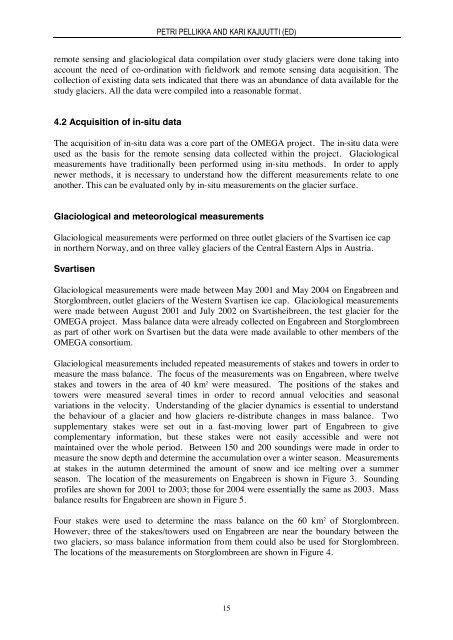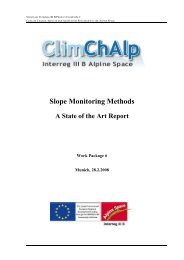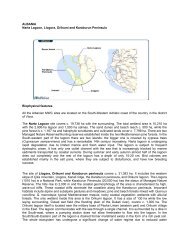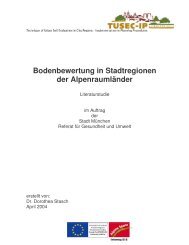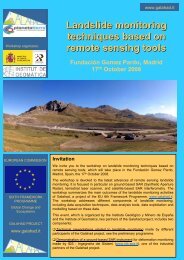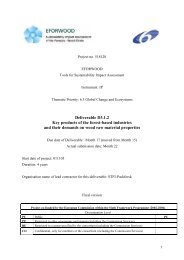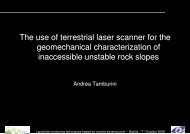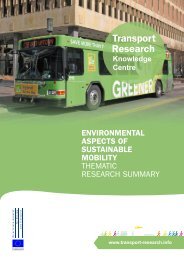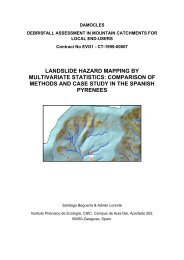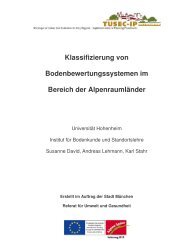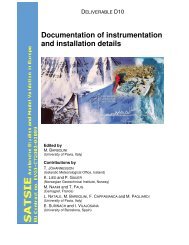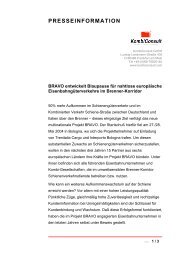1 Background - mountain.PROJECTS
1 Background - mountain.PROJECTS
1 Background - mountain.PROJECTS
You also want an ePaper? Increase the reach of your titles
YUMPU automatically turns print PDFs into web optimized ePapers that Google loves.
PETRI PELLIKKA AND KARI KAJUUTTI (ED)remote sensing and glaciological data compilation over study glaciers were done taking intoaccount the need of co-ordination with fieldwork and remote sensing data acquisition. Thecollection of existing data sets indicated that there was an abundance of data available for thestudy glaciers. All the data were compiled into a reasonable format.4.2 Acquisition of in-situ dataThe acquisition of in-situ data was a core part of the OMEGA project. The in-situ data wereused as the basis for the remote sensing data collected within the project. Glaciologicalmeasurements have traditionally been performed using in-situ methods. In order to applynewer methods, it is necessary to understand how the different measurements relate to oneanother. This can be evaluated only by in-situ measurements on the glacier surface.Glaciological and meteorological measurementsGlaciological measurements were performed on three outlet glaciers of the Svartisen ice capin northern Norway, and on three valley glaciers of the Central Eastern Alps in Austria.SvartisenGlaciological measurements were made between May 2001 and May 2004 on Engabreen andStorglombreen, outlet glaciers of the Western Svartisen ice cap. Glaciological measurementswere made between August 2001 and July 2002 on Svartisheibreen, the test glacier for theOMEGA project. Mass balance data were already collected on Engabreen and Storglombreenas part of other work on Svartisen but the data were made available to other members of theOMEGA consortium.Glaciological measurements included repeated measurements of stakes and towers in order tomeasure the mass balance. The focus of the measurements was on Engabreen, where twelvestakes and towers in the area of 40 km 2 were measured. The positions of the stakes andtowers were measured several times in order to record annual velocities and seasonalvariations in the velocity. Understanding of the glacier dynamics is essential to understandthe behaviour of a glacier and how glaciers re-distribute changes in mass balance. Twosupplementary stakes were set out in a fast-moving lower part of Engabreen to givecomplementary information, but these stakes were not easily accessible and were notmaintained over the whole period. Between 150 and 200 soundings were made in order tomeasure the snow depth and determine the accumulation over a winter season. Measurementsat stakes in the autumn determined the amount of snow and ice melting over a summerseason. The location of the measurements on Engabreen is shown in Figure 3. Soundingprofiles are shown for 2001 to 2003; those for 2004 were essentially the same as 2003. Massbalance results for Engabreen are shown in Figure 5.Four stakes were used to determine the mass balance on the 60 km 2 of Storglombreen.However, three of the stakes/towers used on Engabreen are near the boundary between thetwo glaciers, so mass balance information from them could also be used for Storglombreen.The locations of the measurements on Storglombreen are shown in Figure 4.15


